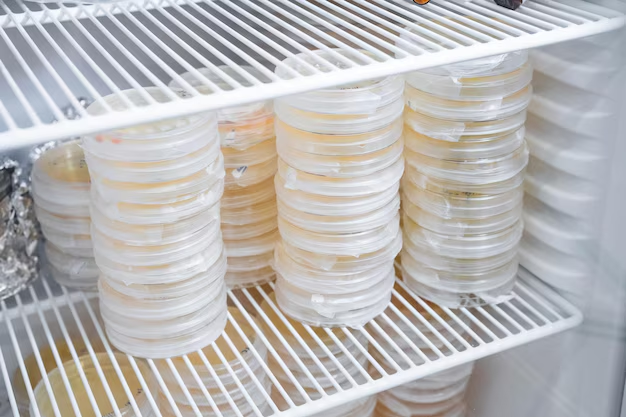How Long Can You Really Keep Cheese in the Refrigerator?
Cheese—a timeless culinary delight cherished across the world, famous for its diversity in flavor, texture, and origin. Whether you're a fan of a sharp cheddar or prefer the creamy notes of brie, cheese is a staple in many kitchens. But what happens once you've opened that package or cut off a piece for your recipe? How do you store it properly, and what is the shelf life when kept in the refrigerator? Let's dive deep into these questions, providing you with practical insight into cheese storage to maximize freshness and avoid the dreaded mold.
🧀 Understanding Cheese Types
Before determining the shelf life of cheese, it's essential to understand that different types of cheese have varying storage needs due to their moisture content, firmness, and maturation process. Here's a brief overview:
Hard and Aged Cheeses
Examples: Parmesan, Pecorino, Aged Gouda
Characteristics: These cheeses have low moisture content and are aged longer, often resulting in a firm texture and intense flavor.
Semi-Hard Cheeses
Examples: Cheddar, Swiss, Provolone
Characteristics: These have a moderate moisture level and are less aged than hard varieties, maintaining a balance between firmness and creaminess.
Soft and Fresh Cheeses
Examples: Brie, Camembert, Mozzarella
Characteristics: These are high in moisture and generally aged for a short time, resulting in a soft, creamy consistency.
Blue Cheeses
Examples: Roquefort, Stilton, Gorgonzola
Characteristics: Characterized by blue or green mold veins, adding tangy notes to the robust flavor profile.
Storing Cheese: General Best Practices
Proper Wrapping Techniques
Hard and Semi-Hard Cheeses: Wrap them in breathable materials like wax or parchment paper. This allows the cheese to release moisture naturally while maintaining flavor.
Soft and Fresh Cheeses: Store these in their original packaging if unopened or wrap them in cheese paper, but ensure they are not suffocated by plastic wrap, which can promote spoilage.
Blue Cheeses: Use foil wrap to sustain the moisture level and prevent the spread of mold spores.
Ideal Storage Conditions
- Temperature: Aim for a fridge temperature between 34°F – 38°F (1°C – 3°C) to maximize shelf life. This range is cold enough to slow down bacterial growth but not too cold to alter the cheese's texture.
- Humidity: Cheese prefers high humidity levels. Consider placing the cheese in a vegetable drawer or using a humidity-controlled cheese box.
Maintaining Freshness
Rotate your stock: Just like in restaurants, use the first-in, first-out rule. This simple practice can prevent older cheese from overrunning its shelf life.
📅 How Long Can You Store Cheese in the Refrigerator?
Here's a breakdown of general shelf life guides for various cheese types once opened:
Hard and Aged Cheeses
Storage Time: Up to 6 weeks
Hard cheeses have a longer shelf life due to their low moisture content. If mold appears, it can be safely cut off with a margin of one inch around the affected area.
Semi-Hard Cheeses
Storage Time: 3 to 4 weeks
These can last quite a bit, though vigilance is needed as they may develop surface mold, which, like hard cheeses, can be trimmed away.
Soft and Fresh Cheeses
Storage Time: 1 to 2 weeks
Given their high moisture content and short aging time, soft cheeses should be consumed more quickly. Mold on these cheeses generally indicates spoilage.
Blue Cheeses
Storage Time: 3 to 4 weeks
While blue cheeses naturally contain mold, any additional surface mold in colors other than the inherent blue or green—especially gray, black, or pink—signals spoilage.
Signs of Cheese Gone Bad
Even with the best practices, cheese won't last indefinitely. Here are some signs that cheese might have overstayed its welcome:
- Foul Odor: Beyond the tangy or sharp smells typical to certain cheeses.
- Slimy Texture: Especially under the original firm rind.
- Unusual Mold: Look out for colors atypical to known cheese types.
- Ammonia Smell: Commonly signals that cheese has gone beyond maturation and is unsafe to consume.
📝 Quick Summary: Cheese Storage Tips
Here’s a handy list to follow for keeping your cheese fresh:
- 🧊 Cool It: Store cheese at 34°F – 38°F in a fridge with high humidity.
- 🧻 Wrap Right: Use parchment, cheese paper, or foil instead of plastic.
- 🥇 FIFO Rule: Apply 'First-In, First-Out' to use cheese before spoilage.
- 👃 Check Smell and Look: Be cautious of unexpected odors or mold colors.
Additional Tips for Cheese Enthusiasts
Incorporating Cheese Leftovers
Cooking Solutions: Grate aging hard cheeses onto pasta or pizza to breathe new life into dishes while avoiding waste.
Freezing Options: Though not ideal for all cheeses due to texture changes, semi-hard and hard cheeses can be frozen and later used for cooking purposes.
Consider Spreads or Dips: Soft cheese beyond prime can be whipped into spreads with herbs for an enjoyable snack.
Exploring Alternatives
Efforts to reduce food waste have encouraged seeking alternative uses for cheese about to spoil. Explore creative paths in cuisine, like cheese sauces or baked recipes, to fully utilize your ingredients.
Cheese, with its diverse varieties and flavors, is a universal favorite. Keeping it fresh and safe to eat involves understanding its types, the roles of moisture and air, and practical storage practices. With these comprehensive insights, you can confidently store your cheese selection, savor its full potential, and minimize food waste. Enjoy the delicacy of cheese without the worry of spoilage, one slice at a time. 🧀
